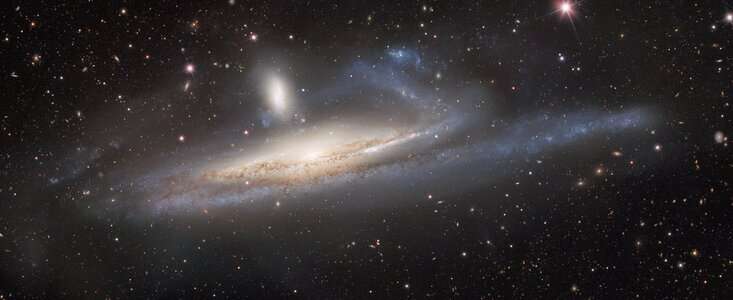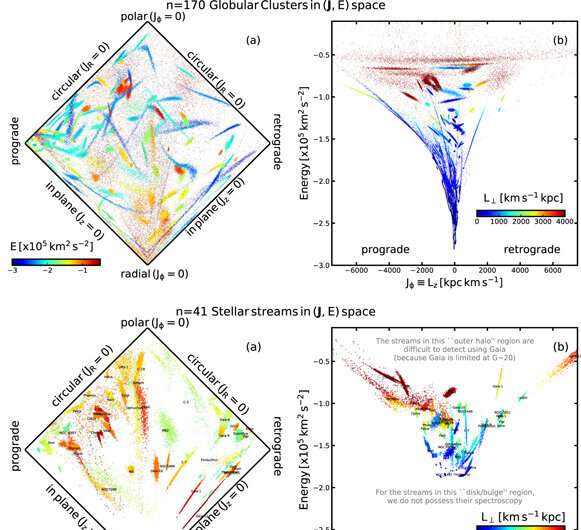This article has been reviewed according to Science X's editorial process and policies. Editors have highlighted the following attributes while ensuring the content's credibility:
fact-checked
peer-reviewed publication
trusted source
proofread
Dark energy camera captures galaxies in lopsided tug of war, a prelude to merger

Galaxies grow and evolve over billions of years by absorbing nearby companions and merging with other galaxies. The early stages of this galactic growth process are showcased in a new image taken with the US Department of Energy's (DOE) Dark Energy Camera (DECam) mounted on the National Science Foundation's (NSF) Víctor M. Blanco 4-meter Telescope at Cerro Tololo Inter-American Observatory (CTIO), a Program of NSF's NOIRLab.
The massive barred spiral galaxy NGC 1532, also known as Haley's Coronet, is located about 55 million light-years away in the direction of the southern constellation Eridanus (the river). Its sweeping spiral arms are seen edge-on from Earth, with the nearer arm dipping downward and the receding arm lurching upward as it tugs upon its smaller, dwarf companion galaxy NGC 1531. These gravitationally bound galaxies will eventually become one, as NGC 1532 completely consumes its smaller companion.
Despite its small stature, however, the dwarf galaxy has also been exerting a noticeable gravitational influence on its larger companion, distorting one of its spiral arms, which can be seen rising above the galactic plane. Additionally, plumes of gas and dust can be seen between the two galaxies, like a bridge of stellar matter held in place by the competing tidal forces. This interaction has also triggered bursts of star formation within both galaxies.

This lopsided cosmic tug of war is a snapshot of how large galaxies grow and evolve by devouring smaller galaxies, absorbing their stars and star-forming material. A similar process has happened in the Milky Way, possibly six times in the past, leaving vast streams of stars and other signs in the halo of the Milky Way.
The process of absorbing a smaller companion galaxy is starkly different from the cataclysmic merger of two spiral galaxies of comparable size. In the latter case, two massive galaxies collide to form an entirely distinct galaxy with its own shape and characteristics. This type of galactic merger will happen to the Milky Way when it merges with the Andromeda Galaxy four billion years from now.
DECam, with its unparalleled wide-field imaging capabilities, gives astronomers highly detailed views of these large-scale galactic interactions. It also has the remarkable sensitivity, with the help of the 4-meter Blanco telescope, needed to detect faint objects in our solar system and to trace the influence of dark matter on galaxies across the visible universe. Currently, DECam is used for programs covering a wide range of science.
Journal information: Astrophysical Journal





















